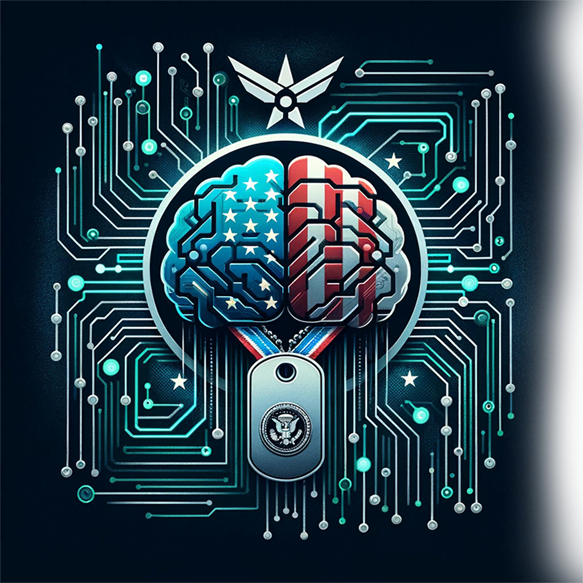
Application Refactoring to Cloud
A microservices architecture is a set of small services that exist in an ecosystem, operating autonomously to accomplish certain responsibilities. Each of these services is unique due to the following:
- Formulated throughout business boundaries
- Separately portable
- Can stand on an individual basis and has the least amount of pairing with any other service
- Remarkably manageable and demonstrable
CCT programs microservices for application refactoring to cloud in a wide range of languages, such as Java and Python. By default, these are decentralized in nature.
Why Opt for Microservices?
Before you move from monolithic applications to microservices, consider the in-depth overview of microservices, its features, and why there is a need to adopt them. Here is why you should take advantage of application refactoring to cloud.
Service-Disabled Veteran-Owned Small Business (SDVOSB)
Scalability
Microservices refer to an ecosystem of smaller and autonomous services. This way, we can help you to scale one or more services without affecting other services. Additionally, it is easy to scale a team and assists with rapid development.
Debugging
With small functions, it is convenient to debug or test your applications on varied levels. Moreover, our team reviews errors and can make debugging cost a lesser amount of resources. Therefore, increase the ability to create error-free deliverables.
Flexibility
Microservices make it easy to incorporate changes in a function without affecting other organization’s services. Besides, monolithic applications have tight coupling, which means any change can disrupt other functionalities.
Robustness
You can achieve robust monitoring with the microservices architecture. Meanwhile, as each service is developed in multiple APIs, platforms, and languages. Several teams are working on a single system, which makes it easy to monitor the progress, testing, and debugging.

Transforming for Innovation, Sustainability and Security
How Does CCT Work with Microservices?
CCT helps your application refactor to cloud with the following workflow.
Break Down Services
CCT’s cloud engineers will dismantle the system at first. They will offer valuable operational insights to your team, allowing you to separate less complex services in the beginning.
We refactor services that are usually coupled from the monolithic architecture and don’t modify the application’s front end. The delivery team optimizes the delivery process and creates the relevant infrastructure to use self-served API for separately deployable services.
Generative AI Software Development
Boost your business efficiency with our custom Generative AI Business Software, tailored for HR, finance, sales, event management, and customer service. Leveraging advanced natural language processing and AI-driven data science, we specialize in customer segmentation, sales analysis, and lead scoring. Elevate your operations and gain a competitive advantage with our precision-driven AI solutions. Contact us to integrate AI seamlessly into your key systems and transform your business.
Small Disadvantaged Business (SDB)
Small Disadvantaged Business leads to enhanced innovation and creativity, as these businesses often offer unique perspectives and solutions shaped by their diverse backgrounds. Moreover, partnering with Small Disadvantaged Business can provide access to specialized skills and capabilities that might otherwise be overlooked, contributing to improved competitiveness and efficiency.
Transforming for Innovation and Sustainability securing future COMPETITIVE ADVANTAGE
Restrict the Monolith Interdependence
Once we decouple the microservices, we make sure that dependency on the remaining monolith is minimized. A major benefit of a microservices architecture is the self-sufficient and fast release cycle, which cannot be achieved in the monoliths. Remember, the actual motivation for leaving the monolith architecture is the slow speed of changes performed and large maintenance costs. With CCT’s assistance, you can change your development realities.
Disconnect the Capabilities
There is a limit to decoupling. At a certain point, there are conditions due to which additional decoupling is not viable anymore. This happens when the monolithic application is buggy and lacks proper definition. For these scenarios, you need to identify the system’s viscous capabilities, rebuild them with a well-planned domain, and then split them into individual services.
Split the Vertical Capabilities
A monolithic application consists of different strongly coupled layers that are needed to be discharged at the same time and have a hardcore dependency. We split the capabilities to discharge them separately from the monolithic application. This is done to separate capabilities vertically, disjoining the root capabilities and take all the front-end applications to the new APIs. The main concern in disjoining the services is having manifold applications, which depend on centrally shared data. Therefore, it is needed that the team utilizes strategies for data migration that meets their system.
Disconnect the Major Business Functions
One of the key processes in monolithic applications is to release a capability, involving extracting front-end components, data, logic and then redirect it to the next service. This is a large amount of work that your team will have to execute.
This is why the team is required to continuously determine the decoupling cost and the benefits emerging from the transition. If the goal is to speed the modifications in the current capabilities sealed in the monolithic application, CCT’s team can help separate code areas that have been evolving at a rapid rate.
Detach Capability Over Code
There are two methods for extracting a capability from the current architecture – by rewriting it or extracting it. Usually, the extraction is done by reusing the code. Often, development teams choose costly resources, both labor and cost, for code reuse. However, they neglect the significance of rewriting.
We prioritize rewording the capability as a new code rather than using the old code. Rewriting assists businesses in revising the business capabilities and adjusts them as per the prevailing needs.
Move to Micro with Application Refactoring to Cloud
We help your team identify the domain perimeters and train them to practice domain-oriented strategies. Maintaining consistency is key to determining the domain perimeters. Too big or too small of a microservice can disrupt a system, which can lead to unsuitable functioning.
We recommend creating boundaries by assessing how small microservices can align with your business. It is advised to split the monolithic applications into smaller services to a considerable extent, so your team can manage, operate, and handle them smoothly.
We help your team identify the domain perimeters and train them to practice domain-oriented strategies. Maintaining consistency is key to determining the domain perimeters. Too big or too small of a microservice can disrupt a system, which can lead to unsuitable functioning. Contact Cloud Computing Technologies for expertise in application refactoring to cloud.
What clients say about Cloud Computing Technologies
★★★★★ 5/5
"CCT's diverse skills and expertise has reduced our technical debt by millions of dollars to which we have reinvested into future capabilities."

Mrs. Hanson
★★★★★ 5/5
"With CCT migrating our critical systems into the AWS, 80% our staff is now remote working."

Mrs. Miller
★★★★★ 5/5
"CCT showed us how to meeting regulatory compliance in AWS Landing Zone and greatly improved our cloud security controls."

Mrs. Wilson
★★★★★ 5/5
"CCT provided our agency with application rationalization services and successfuly applicaton migrations meeting all KPIs and SLAs."

Federal Agency
★★★★★ 5/5
"I highly recommend the data science team at CCT. They are technically proficient, great communicators, unbiased, and reduced our false positives by 68%."

Mr. Brown
★★★★★ 5/5
"The team at CCT is knowledgable and insightful in developing a cloud architecture leading to our mission success."

Mr. Robinson
Experience and Agile Expertise
you can trust
Years in business
20
Contracts Awarded
180
+
Further information about Application Refactoring to Cloud.
Frequently Asked Questions
Application Refactoring to Cloud involves the process of optimizing and transforming existing on-premises or legacy applications to leverage cloud-native architectures, services, and capabilities. Unlike traditional application migration, which involves lifting and shifting applications to the cloud without significant modifications, Application Refactoring to Cloud entails rearchitecting applications to take full advantage of cloud benefits such as scalability, agility, and cost-efficiency. This approach often involves breaking down monolithic applications into microservices, adopting containerization technologies, and reengineering code to align with cloud best practices.
Application Refactoring to Cloud offers several key benefits for businesses, including improved performance, scalability, agility, and cost savings. By refactoring applications for the cloud, businesses can modernize their IT infrastructure, enabling greater flexibility and responsiveness to changing business requirements. Additionally, refactored applications are better positioned to take advantage of cloud-native services such as serverless computing, machine learning, and IoT, driving innovation and differentiation in the marketplace. Moreover, Application Refactoring to Cloud can help businesses optimize their cloud spend by right-sizing resources, improving resource utilization, and reducing operational overhead.
Various types of applications are suitable candidates for refactoring to the cloud, including monolithic legacy applications, complex enterprise systems, and mission-critical workloads requiring scalability and agility. Businesses can identify suitable candidates for refactoring by evaluating factors such as application architecture, performance bottlenecks, scalability requirements, and alignment with business objectives. Applications that exhibit characteristics such as tightly coupled components, limited scalability, and high maintenance costs are prime candidates for refactoring to the cloud, as they stand to benefit the most from modernization and optimization.
The Application Refactoring to Cloud process typically involves several key steps, including assessment, planning, refactoring, testing, and deployment. Businesses can navigate these steps successfully by following a structured approach, starting with a comprehensive assessment of their application portfolio to identify candidates for refactoring and assess their readiness for the cloud. Next, businesses should develop a detailed migration plan, outlining goals, timelines, and resource requirements for the refactoring effort. During the refactoring phase, businesses should focus on breaking down monolithic applications into modular, scalable components, leveraging cloud-native services and architectures where appropriate. Finally, rigorous testing and validation are essential to ensure the refactored applications meet performance, security, and reliability requirements before deployment to production environments.
Businesses can benefit from partnering with external consultants, cloud service providers, or managed service providers with expertise in Application Refactoring to Cloud to support their initiatives. These experts can offer guidance, best practices, and tools to streamline and accelerate the refactoring process, reducing risk and ensuring successful outcomes. Additionally, businesses can leverage cloud migration services and tooling provided by cloud vendors to automate and simplify the refactoring process, minimizing manual effort and accelerating time to value. By tapping into external expertise and resources, businesses can augment their internal capabilities and achieve their refactoring goals more efficiently and effectively.








